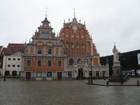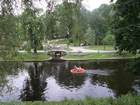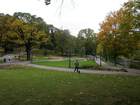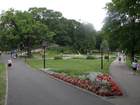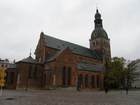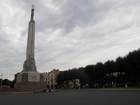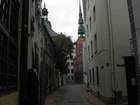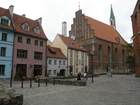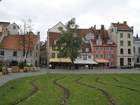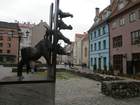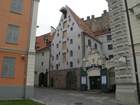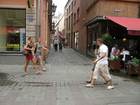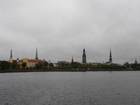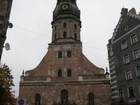Independent Excursion to the Old Town of Riga
2010-10-21 16:40
In the historical centre of Riga the architecture has left the trace of all the architectural styles, which were characteristic to East Europe - from the gothic to modernism. The layout of the historical centre of Riga reflects the housing of XIX-XX century border - the buildings are orientated to the direction of the main streets from the XVI century. The development of the city was influenced by the backward-looking defense system (embankments, constructions) disestablishment in 1857-1863. Such a alteration made the good circumstances for the picturesque gyre of the boulevards to appear. In the middle of XIX-XX centuries, when the building of the multi-storyed houses started to be active, the unique buildings in the style of Art Nouveau (jugendstil) also started to grow. There are still remaining the complexes of the wooden buildings of that time in the districts of Riga. These houses are ones of the most unique valuables in XXI century. Especially because of these architectural "gemstones" the historical centre of Riga was included in the list of UNESCO world heritage in 1997.
Riga is really worth to visit, especially that this neighbor country is very near us. It doesn't matter what point you will start from to go to the centre of Riga, probably you will anyway find yourself in a gyre of the boulevards, which separates the old Riga from the new.
Let us go for a walk...
1. The Gyre of the Boulevards
In the middle of the 19th century the defense system of Riga got already morally old and put the city development to great inconvenience. The government of Russia repealed the status of the defense for the inner buildings of the city in 1856. Because of this reason a possibility to demolish the buildings which impeded the new construction appeared.
The defense embankments were removed in 1857-1863, so that in their place a lot of undeveloped space appeared around the old Riga. The project of arrangement of environment started.
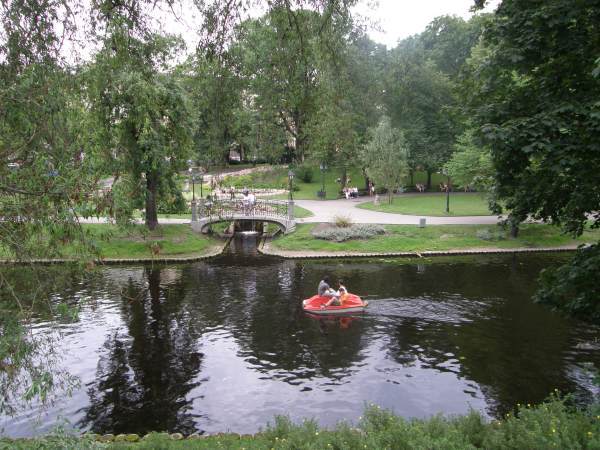
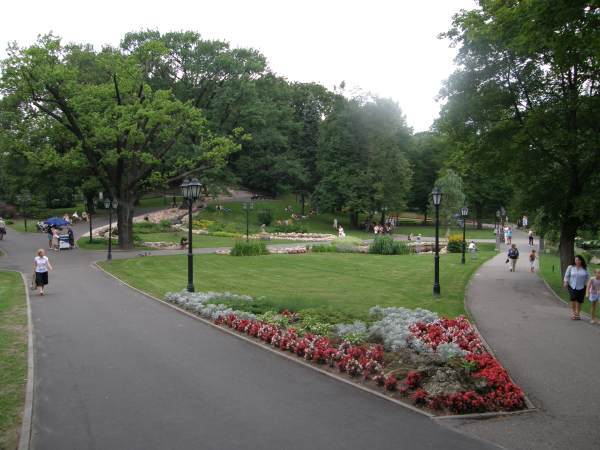
The strip of decorative seedlings, grass-plots and the parks was shaped (the width was about 300 m). The water from the city watercourse was streaming in the middle of it. Later this zone expanded because of the Verman garden and the boulevards of the planted limes. When the area was housed with the buildings, th e so called gyre of boulevards was formed, which became the real oasis in the nowadays modern city.
The best-known object in the gyre of boulevards is the monument of freedom. If you find yourself around the main street of Brīvības, you see the monument of freedom in the very end of the street in front of the entrance to the Old Town. If you came from the railway or the bus station direction, then you see the monument of freedom on the left, above the trees of the park. Latvian folk symbol of freedom was built for the donated money. The monument was exposed in 1935 November 18th, in the day, when the independence of Latvia was adopted in 1918.
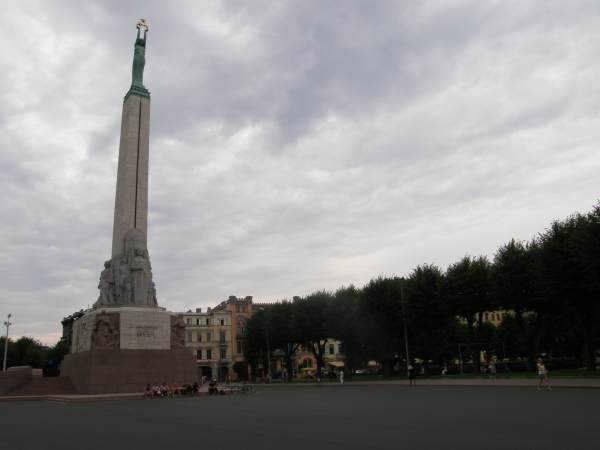
In the time of Soviet occupation it was prohibited to soak the flowers or to mob near the monument, but despite this people tried to organize meetings, celebrate the important dates of the nation. After the adoption of the independence of Latvia's nation the post of the guard of honour was reinstated. On the right of the monument you will see one more important architaectural object - the National Opera.
3. The National Opera
It was the first separate public building, constructed in the territory of the park. National opera was the theater of the city (German) (now it is the theater of Opera and Ballet).
The hall for the audience is of a round shape, there are 1240 sitting and 150 standing places, it is known by good acoustics and harmonious proportions. The territory of the park, where stands the monument of freedom and the National Opera separates the Old Riga from the left part of the city centre.
4. The Old Riga
The old Riga - historical and geographical centre of Riga city is established in the right bank of the river Dauguva. The old Riga surrounds comparatively inconsiderable territory of the internal fortress of the town, which was built in XIII-XVII c. There are concentrated the unique architectural monuments from the Middle Ages in this territory. The main and most popular "entrance" to the Old Town of Riga is the street of Kalku. Going through the street of Kalku you will face a lot of expensive hotels, clubs and restaurants and finally come to the tumultuous street of Livu. If you turnt to the right in the beginning of the street and go cornerwise this street you will approach a miniature medieval castle and the street of the Crafts. In the end of the street of Crafts you should turn to the right and go straight. The square of Dome and the cathedral itself will appear in front of you there.
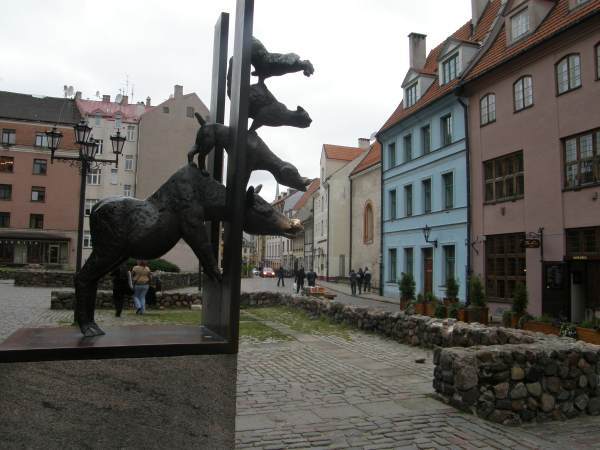
5. Dome cathedral in Riga 1211 y., XIII-XX c.
The constructional of a complex of Dome cathedral and monastery in Riga started in 1211. The complex was built like a temple for the bishop of Riga. Arround the year of 1270 the main works were already done. The quadratic yard had been formatted between the cathedral and the monastery. The yard was surrounded by the gallery of the Crosses. Subsequently the yard was being started to use like a place for the marketing. The accommodation for a museum and archive of Riga was built over the gallery of the Crosses in 1888-1891. Nowadays we can find there a nautical and historical museum of Riga. The famous organs were installed in the cathedral of Dome in 1884. They were the largest ones in the entire world at that time. On the left of the Dome cathedral you will see a narrow street of Janiela. Go straight through it till the first side-street to the left, which will lead you to the square of the city hall (on the right). From the square of the cathedral you will be able to see the river of Dauguva. You will also find here the Houses of the Blackheads in this square.
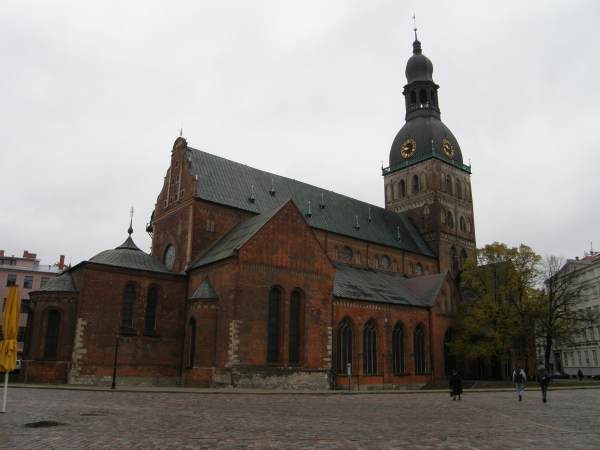
6 The House of the Blackheads guild
This especially important social centre of Riga was mentioned in the annals for the first time in 1334 like a New house of a Great guild. The building was built by the town of Riga. In the beginning the house was rented by the merchants of the Great guild and the unmarried merchants of the Blackheads brotherhood, who acquired this building to their own possession subsequently. The blackheads played an important role in the life of the town because of their position in the society. Only the very important persons (VIP) congregated in their house, even the tsars of Russia amongst them. Like a club for the German merchants the brotherhood existed till 1939. The house of Blackheads violently suffered during the World War II. It was rebuilt in 2000. On the left of the house of Blackheads you will find Saint Peter's church.
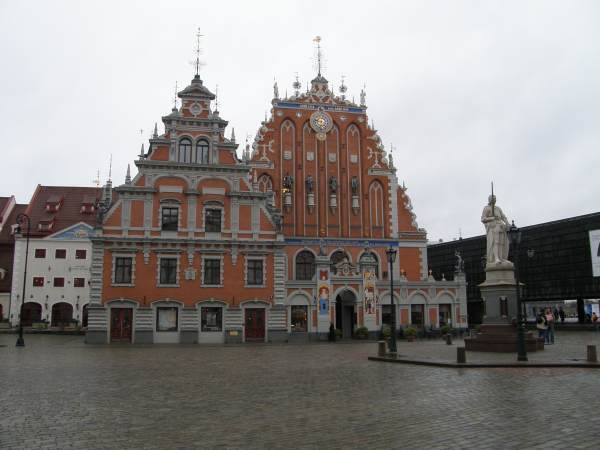
7. Riga Saint Peter's chuch
saint Peter's church was the main church of the citizens of Riga in the Middle Ages and belonged to them from the immemorial times. The visitors of the church were the privileged merchants from the Great guild and the craftsmen from the Minor guild workshops. Nowadays there is an elevator installed in the tower - the visitors are able to lift with it to the second gallery of the tower in the height of 72 meters. It is an excellent opportunity to review the city from above.
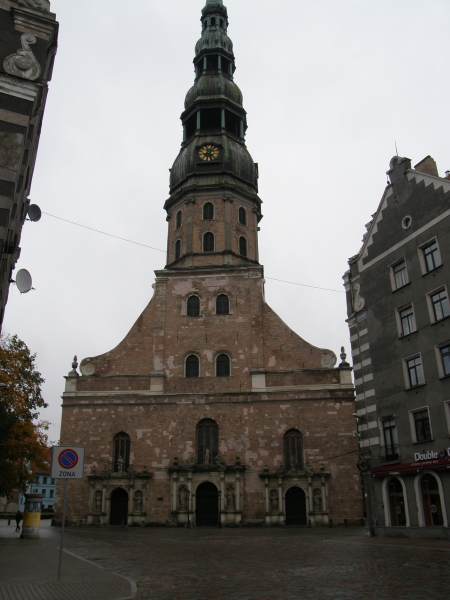
When you already had a look at the most important sightseeing objects of Riga you may go for a walk in the wonderful tiny side-streets. Maybe you will find something unique for yourself, what we didn't mention in this short excursion.
Žiūrėti Riga didesniame žemėlapyje
The routes of the city buses
Bus N#.22. departures from the street of Abrene, it's direct route is from an airport to the city centre. You will disembark in the terminal of the airport on the second level. To get on a bus in the airport you should look for the bus-stop in front of the terminal just behind the car parking-lot. The bus goes every 10-30 min. The trip takes approximately a half an hour.
Bus N#.22A - express. The bus reaches an air port from the centre of Riga. The bus stop is Katedrāle (Brīvības boulevard).
You can find more detailed information about the routes and the schedules of the buses here http://www.rigassatiksme.lv
Some hotels take care of the route from and to the air port by themselves.
Taxi
The air port has a contract with a taxi park of Riga. An office of the company is located on the first level of the arrivals area. The working hours are accommodated with the schedules of the flights. The telephone number is +371 7207509. A trip to the city centre takes about a quarter of an hour. It costs 1. 50 LVL (~7.50LT) plus 0.50 (~2.50LT) for each kilometer. From an air port to the city centre it will cost you about 8 LVL (~40LT).
Riga international airport Information centre
Information line: + 371 67207009
Fax: +371 67211767
E-mail: office@riga-airport.com
Information was prepared by
Vilma Galminaitė, Marina Berezovska


